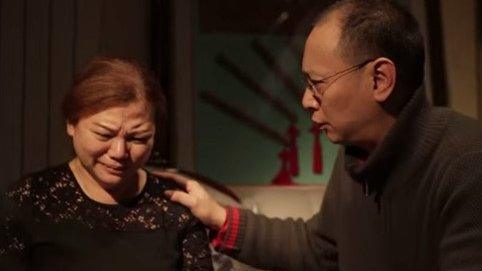The gay Chinese farmer and his cutting edge art
- Published
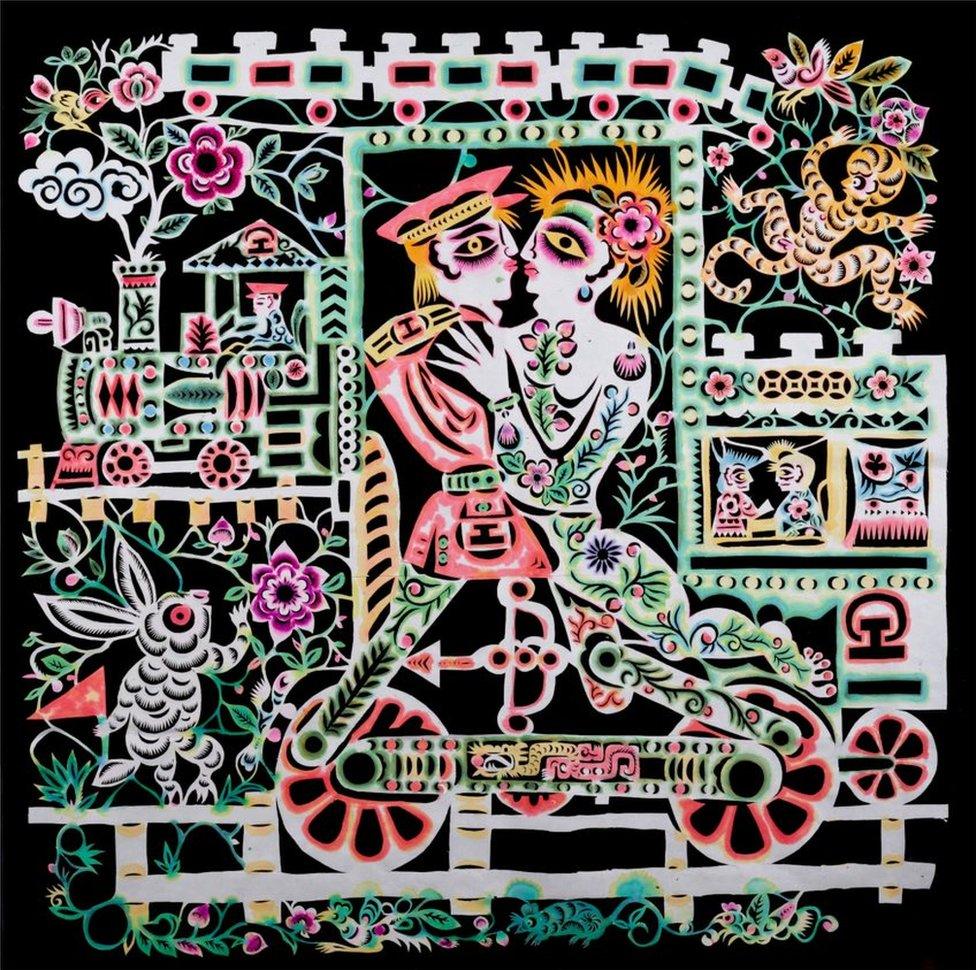
A gay Chinese farmer who found emotional release by depicting his suppressed erotic fantasies in traditional Chinese paper cuttings is part of an exhibition of gay Asian art in Taipei. The BBC's Cindy Sui traces a story that began with self-denial and frustration - and an exhibition that reflects Asia's changing attitudes towards gay art.
Some readers may find images in this article explicit.
The first time Xiyadie's artwork was exhibited in mainland China, police raided the private gallery. They confiscated the other artists' erotic works, but left his alone.
"They said my artwork was pretty good," said the 54-year-old artist, chuckling.
Had they looked closer, they would have noticed his were some of the boldest gay artworks, revealing the troubled psyche of China's homosexual community.
Now, more than 50 works by diverse artists from across Asia have gone on display at Taipei's Museum of Contemporary Art (Moca). It is billed as the first public exhibition of LGBTQ (lesbian, gay, bisexual, transgender and queer) themed art of its kind in Asia.
Xiyadie's work is easily masked as traditional Chinese paper cuttings of village scenes - red brick courtyard homes, flowers and birds. But look carefully and one depicts him so tormented by his desire for his male lover that he sews up his penis with a needle and thread.
Another depicts his wife holding their son inside their home while he and a man have sex outside, with facial expressions both painful and blissful.
"At that time in villages, if you came out of the closet, your family would scold you and you wouldn't be able to live there anymore," said Xiyadie.
"Even though I really wanted to be with the man I loved, I was afraid to. I thought I had a sickness… I felt very very painful, but also happy. So I did my life in paper cuttings."
The Taipei exhibition, called Spectrosynthesis - Asian LGBTQ Issues and Art Now, aims to chronicle and showcase the artistic inspiration and achievements of ethnically Chinese artists like Xiyadie.
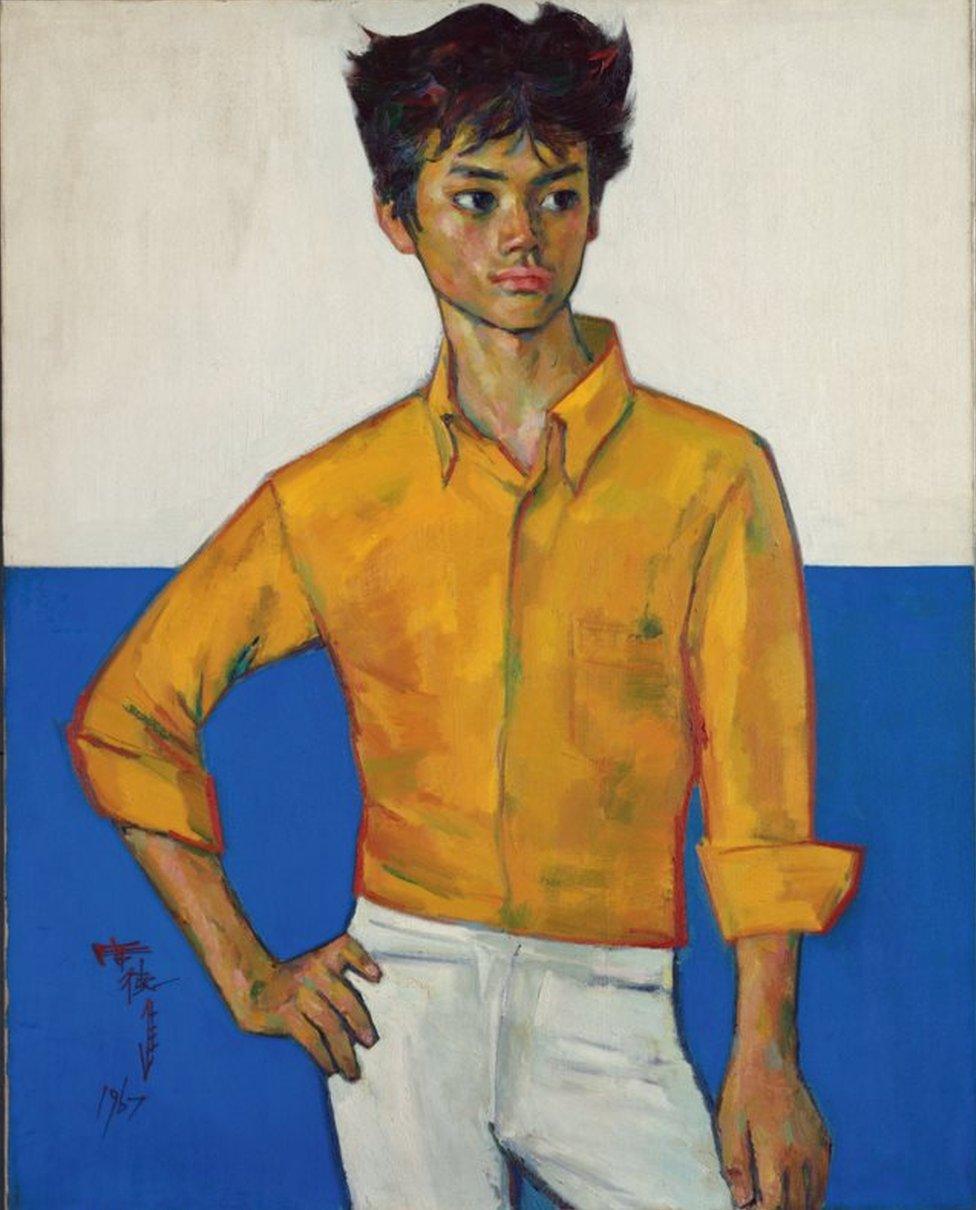
The exhibition includes works by the late Taiwanese painter Shiy De-jinn, who often painted young men to express his love
The works span decades and are by artists from Taiwan, mainland China, Hong Kong, Singapore, the United States and Canada who explore their desires, predicaments and their own sexuality identities.
"When it comes to gay art, Western work is commonplace, but there are far fewer Asian gay art and artists," said Patrick Sun, the founder of Sunpride Foundation, a non-profit art promoter co-sponsoring the exhibition.
"In Asia, the most difficult part for us is to find out about the older generation of artists… because people of that generation do not actually come out of the closet," said Mr Sun. "They don't want to be stigmatised."
Chief curator Sean Hu says unlike the older generation whose art is subtle, these days young Asian artists confront gay issues more directly. "They're more willing to express themselves freely," he says.
One photograph by a young artist depicts a gay household - a naked man lies on a sofa with his two housemates nearby. Another artist made a photo series of his nude body.
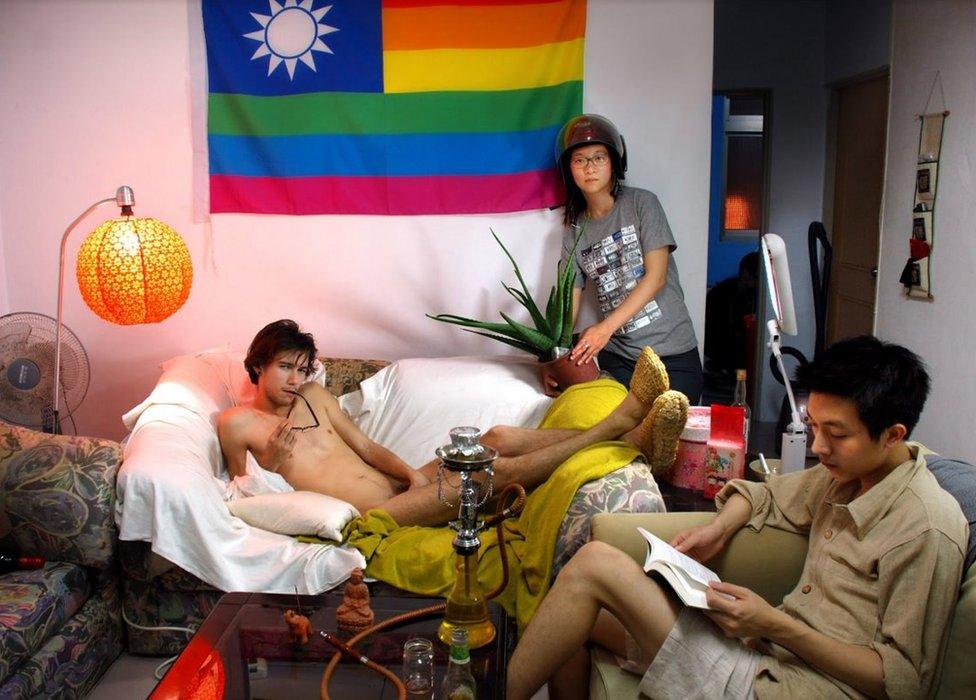
This photograph, by Tzeng Yi-Hsin, is based on the Manet painting Olympia and features a rainbow version of the Taiwanese flag
Regardless of their age, many of the artists have suffered periods of isolation and turmoil.
Singaporean artist Jimmy Ong's works explore gay people's desire to have a family. One shows two men lovingly holding a little boy.
"It's like I'm saying that we're not any different from straight people, we have the same hope [to have a family] and the same grief, pain or sadness," he said.

Ong's artwork Heart Sons depicts two men holding a baby
Mr Ong's artwork has never been displayed in a public museum in Singapore, where gay sex remains illegal.
No other museum in Asia has agreed to host the exhibition so far, but Moca's director Yuki Pan said she was not afraid to do so, and even set up a protest area for critics.
Taiwan is considered the most accepting place in Asia for homosexuals; its highest court in May became the first in Asia to rule that same-sex marriages should be legalised.
Ms Pan says museums have a duty to reflect the gay community. "After seeing the exhibition's works, I feel sad," she said. "Their inner life is very lonely and helpless."
"I really hope everyone can see gay artists' feelings so they can be more empathetic and not just hear the pro-and-con debate."
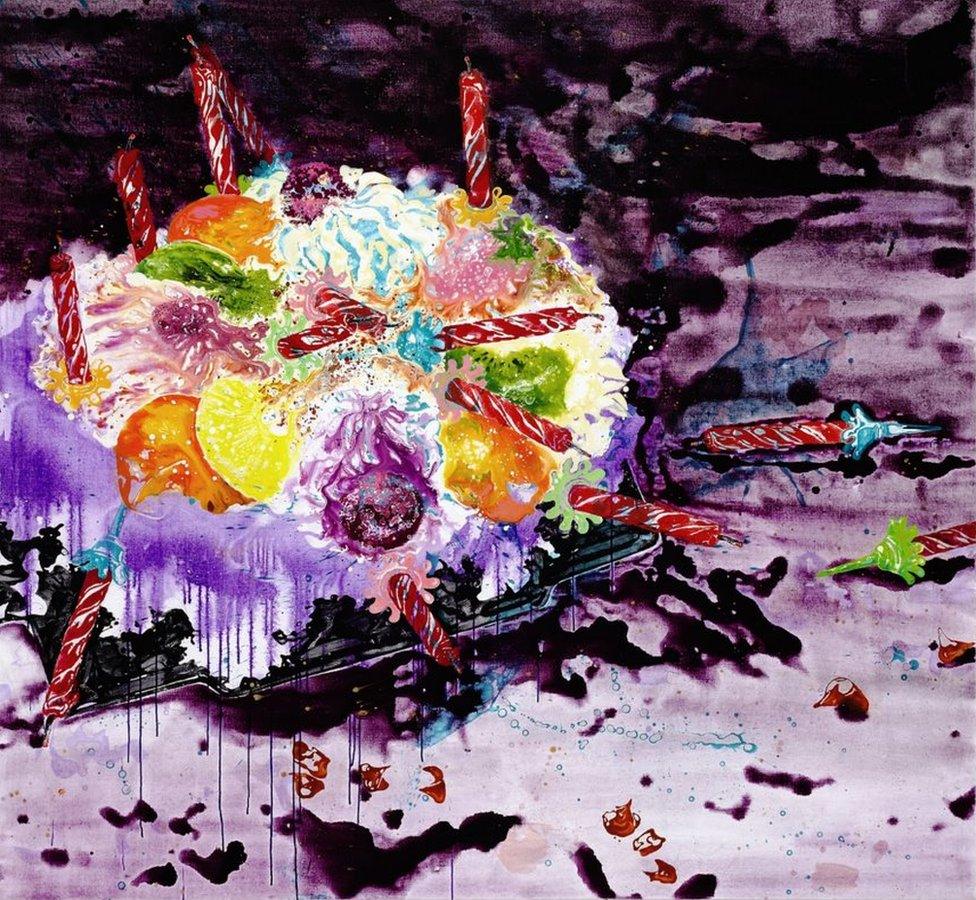
Wang Liang-yin's painting The Wanted Ones - The Sweet Afterlife is also on display
For Xiyadie, it's been a long journey.
Growing up in a traditional village in northern China's Shaanxi province, he was attracted to men at a young age, and fell in love with a former male classmate he had a brief romantic encounter with in his family's apple orchard.
But he thought there was something wrong with himself and suppressed his love.
Instead, he married a woman because he felt he had to. Torn by his love for the classmate and subsequent affairs with a second man, as well as his guilt toward his wife, he nonetheless stayed married to her because they had to take care of their invalid son.
It was during the years caring for his dying son and living with this turmoil that he made his paper art about his life and love.
"We were all in pain. When I was with my wife, I thought of the man I loved, but did not dare to find him," Xiyaidie said.
"My wife was also in pain. It's not easy being her; she gave her life to our marriage. … I felt sorry to her. I not only cut myself [on paper]; I also cut her."
He eventually moved to Beijing, where his art was discovered when he visited a doctor, who also happened to be gay.
"I asked him what medicine he could give me to stop me from thinking of the man I loved. The doctor said: 'You don't need to change yourself; you're so healthy. I've even come out to my mother!'" Xiyadie recalled.
"He said 'In Beijing, there's an art exhibit for comrades [gay people], why don't you show your work?"
People in the local gay art community then saw his art and "said 'Oh my god! You are so brave. You're a real gay artist'," he recalled.
They convinced him to post his works on a website and promised to protect his identity. Xiyadie is a pseudonym.
His paper cuttings have since been exhibited and collected by overseas museums. China also made them into stamps last year, in a big step towards acceptance.
With the art he has sold, Xiyadie paid off the debts from his late son's medical bills. He's still married, but has come out to his wife and is dating a man.
"When I was young, I struggled with myself... I kept trying to change myself. In the end, I didn't change myself, because natural forces cannot be changed. That beauty can never be killed by me."
"I hope my art will bring everyone happiness."
- Published16 July 2017
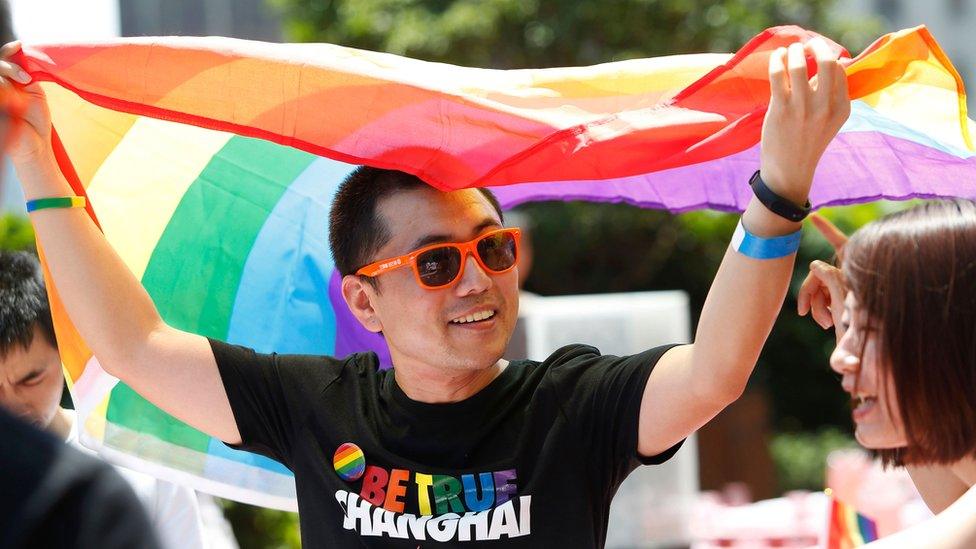
- Published6 July 2017
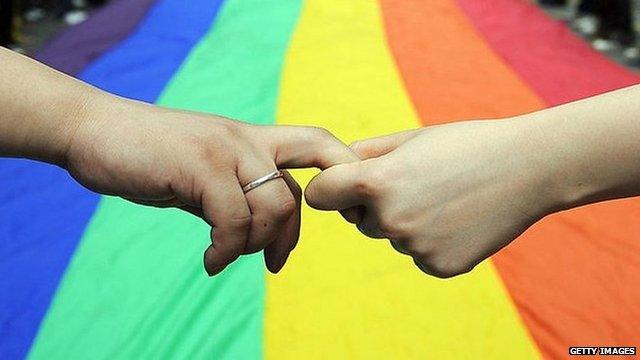
- Published24 May 2017
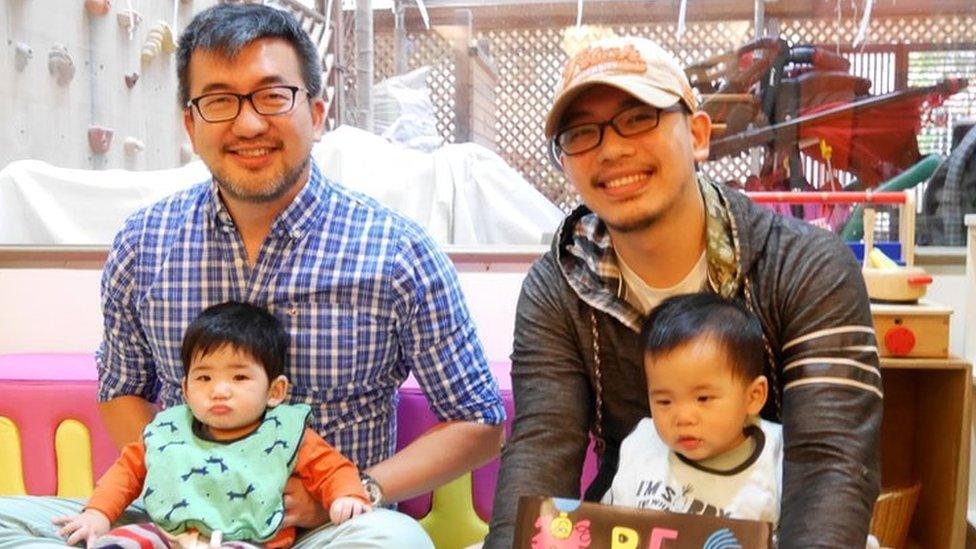
- Published23 February 2015
